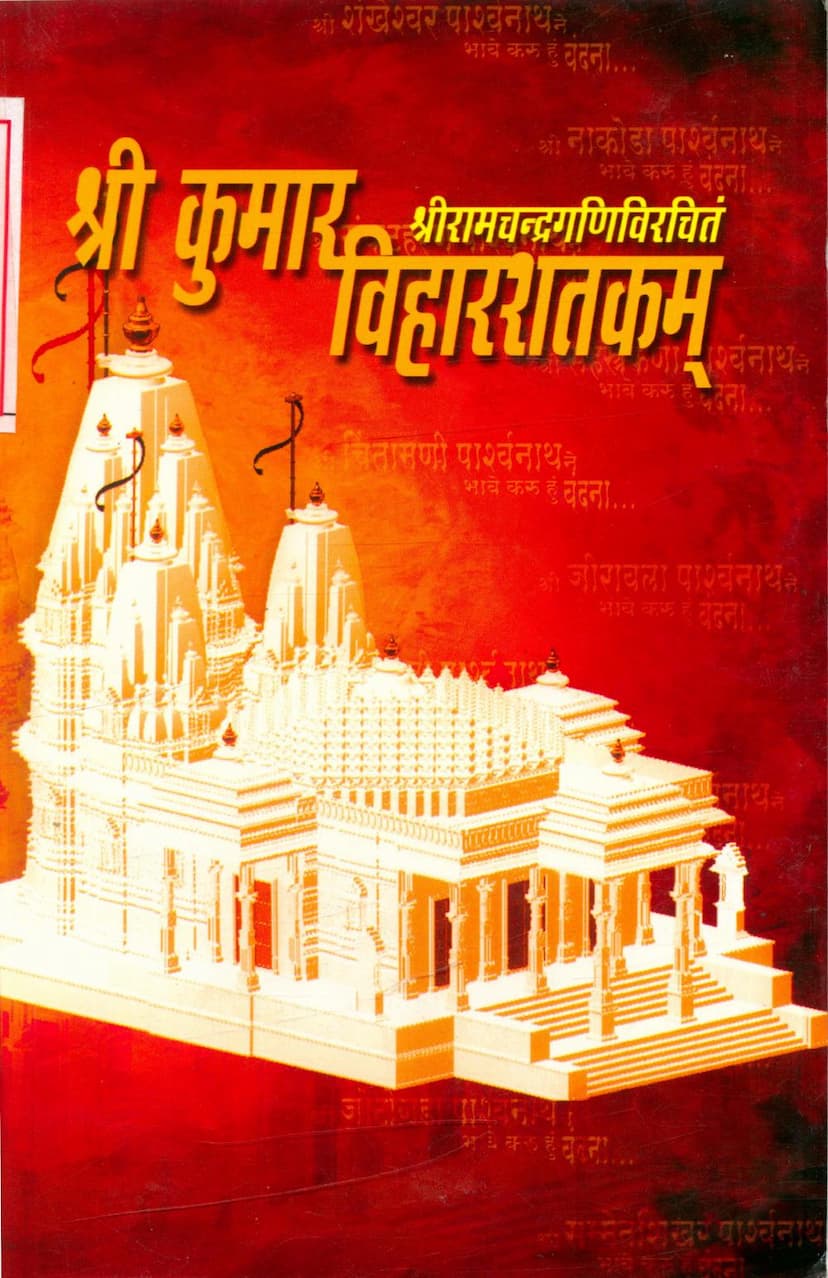Kumarvihar Shatakam
Added to library: September 2, 2025

Summary
This document is the "Kumarvihar Shatakam" by Ramchandragani, edited by Muniratnabodhivijay, and published by Shri Jinshasan Aradhana Trust. It is a poetic work describing the Kumarvihar, a temple built by King Kumarpal.
Here's a comprehensive summary of the provided text:
Book Information:
- Title: Kumarvihar Shatakam (कुमार विहार शतकम्)
- Author: Ramchandragani (श्रीरामचन्द्रगणी)
- Editor: Muniratnabodhivijay (मुनि रत्न बोधि विजय)
- Publisher: Shri Jinshasan Aradhana Trust (श्री जिनशासन आराधना ट्रस्ट), Mumbai.
- Catalog Link: https://jainqq.org/explore/023186/1
Content Overview:
The book is a collection of 100 verses (shatakam) by the renowned Jain monk and poet Ramchandragani. It meticulously describes the "Kumarvihar," a magnificent temple commissioned by the illustrious Jain king Kumarpal of Gujarat, who was a devout follower of Jainism and a disciple of the great Acharya Hemchandrasuri.
Key Themes and Descriptions:
-
The Temple's Splendor: The verses are dedicated to the detailed and artistic description of the Kumarvihar temple, its architecture, and its divine essence. The poet uses vivid imagery and rich language to portray its beauty.
-
King Kumarpal's Devotion: The text highlights King Kumarpal's profound devotion to Jainism, inspired by Acharya Hemchandrasuri. It mentions his late conversion to Jainism, his acceptance of the twelve vows of a Shravak, his promotion of non-violence (daya) throughout his kingdom, and his extensive charitable activities, including the construction and renovation of numerous temples, establishing libraries, and supporting the Jain community.
-
The "Kumarvihar" Temple: The temple was built in Patan in memory of Kumarpal's father, Tribhuvanpal. It featured intricate designs, numerous smaller shrines (deveris), and exquisite idols, including a central idol of Lord Parshvanath made of gemstones. The poet Ramchandragani, a disciple of Acharya Hemchandrasuri, was inspired to compose this "Shatakam" (hundred verses) after being shown this temple.
-
Poetic Merit: The preface and the commentary (Avachurni) emphasize the literary excellence of Ramchandragani's work. His poetry is praised for its beauty of words and meanings, its ability to evoke deep emotions, and its insightful descriptions that capture the essence of the subject. The commentary provides grammatical explanations, word meanings, and further insights into the verses.
-
Inspiration and Commentary: The current edition is a re-publication, supported by various Jain trusts and individuals. The editor, Muniratnabodhivijay, has meticulously compiled and annotated the text, including a Sanskrit introduction. The work is enriched by the "Avachurni" (commentary) written by Pandit Vibudhotam Sudhabhushan Gani, a disciple of Pandit Vivek Sagar.
-
Historical Context: The text places the events within the context of the 12th century, detailing the influence of Jainism during the reign of King Kumarpal and the significant role of Acharya Hemchandrasuri in shaping the spiritual and cultural landscape of the era.
-
Description of Divine Attributes: The initial verses invoke Lord Parshvanath, describing His divine attributes, His power to destroy karma, His serene gaze, His luminous presence, and His ability to bestow blessings. The poet uses metaphors and similes, such as comparing the Lord's feet to lotuses and His radiance to the moon and divine nectar, to elevate the reader's spiritual understanding.
-
Detailed Temple Imagery: Many verses focus on specific aspects of the temple:
- The brilliant radiance of the idols from the gemstones within their pedestals.
- The captivating moonlight reflecting on the moonstone pillars and walls.
- The exquisite artistry of the temple, which surpasses even the skill of divine architects.
- The reflections of the temple's beauty in the water, creating illusions of divine beings.
- The grandeur of the pillars, ceilings, and the craftsmanship that creates a celestial atmosphere.
- The artistic representations of various celestial beings, animals, and divine scenes.
- The sensory experience evoked by the temple's beauty, impacting sight, sound (music), and even the imagination.
-
Devotional Impact: The verses aim to inspire devotion in the readers, encouraging them to reflect on the teachings of Jainism and the virtuous life led by King Kumarpal and his spiritual guide, Acharya Hemchandrasuri. The text is presented as a means to attain spiritual merit and ultimate liberation.
In essence, the "Kumarvihar Shatakam" is a devotional and artistic tribute to a significant Jain temple and the righteous king who patronized it, showcasing the peak of Jain architectural and artistic achievements, coupled with profound spiritual teachings.